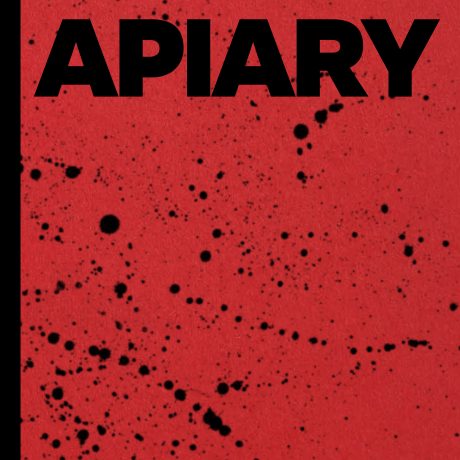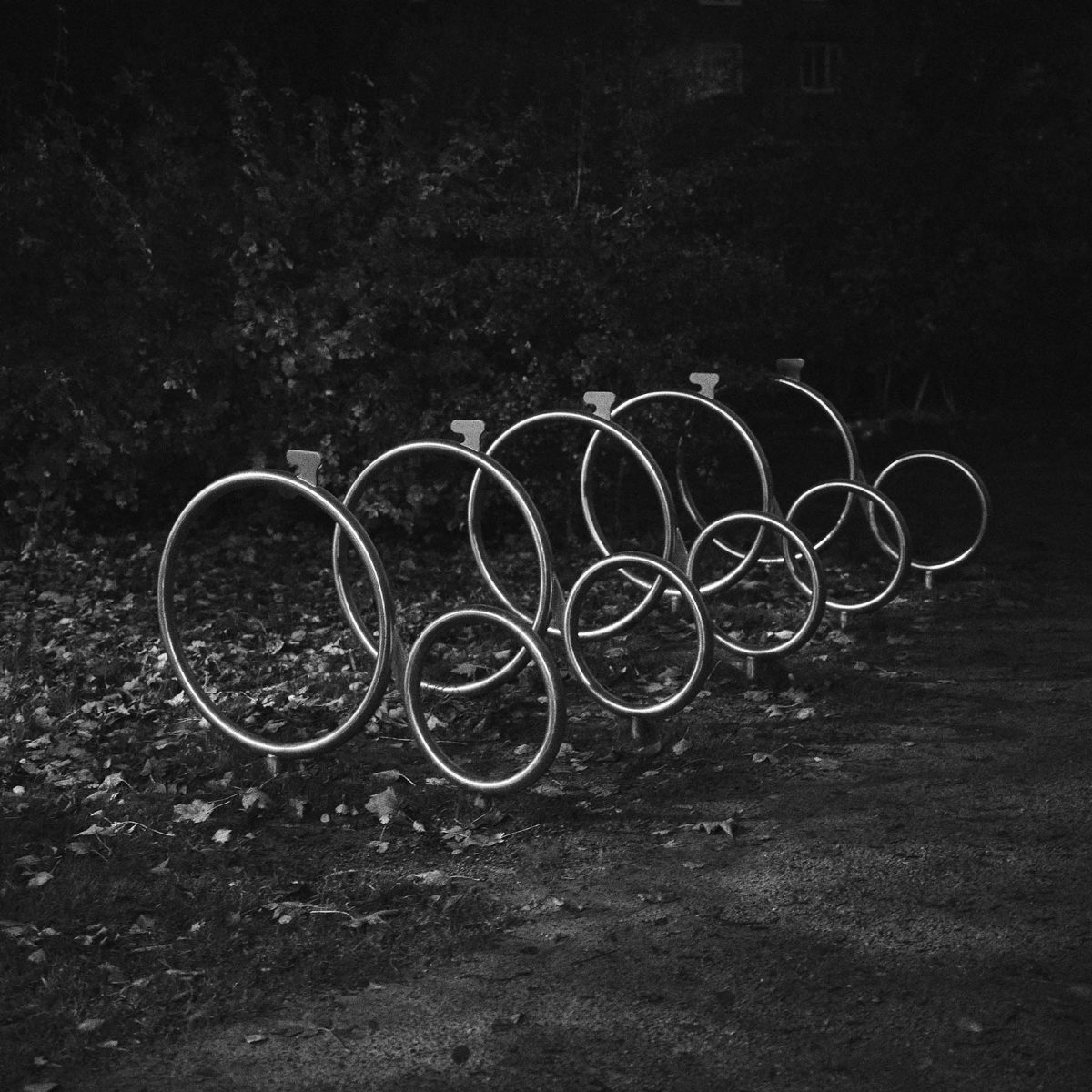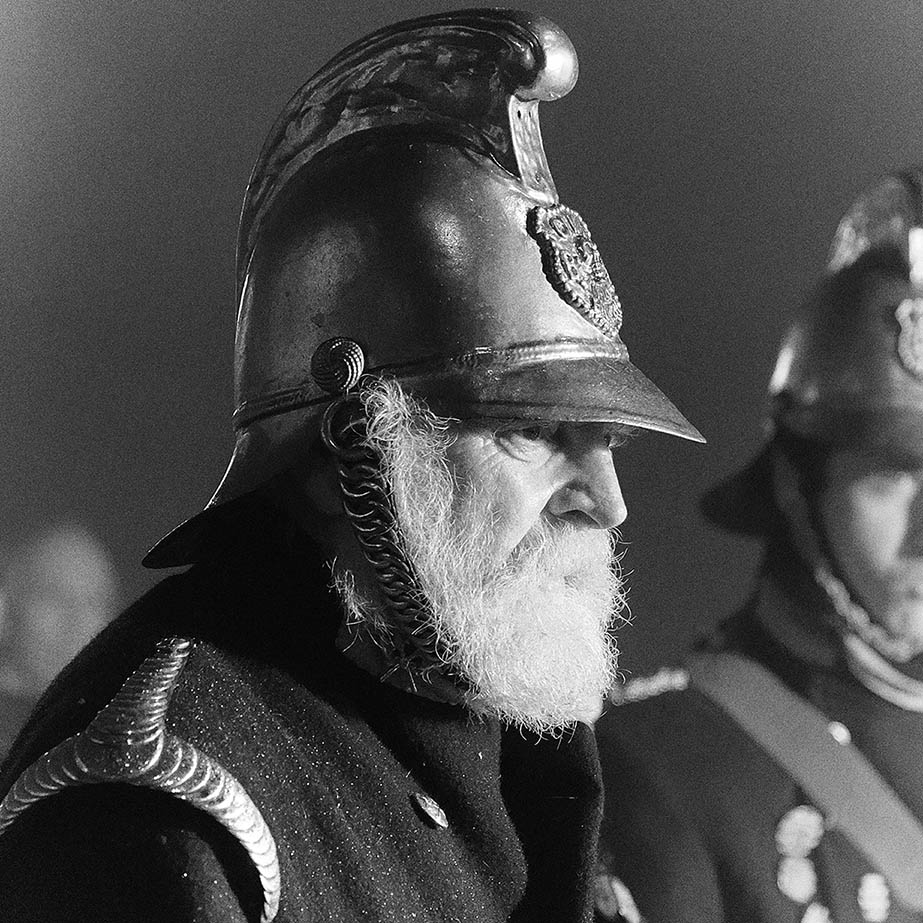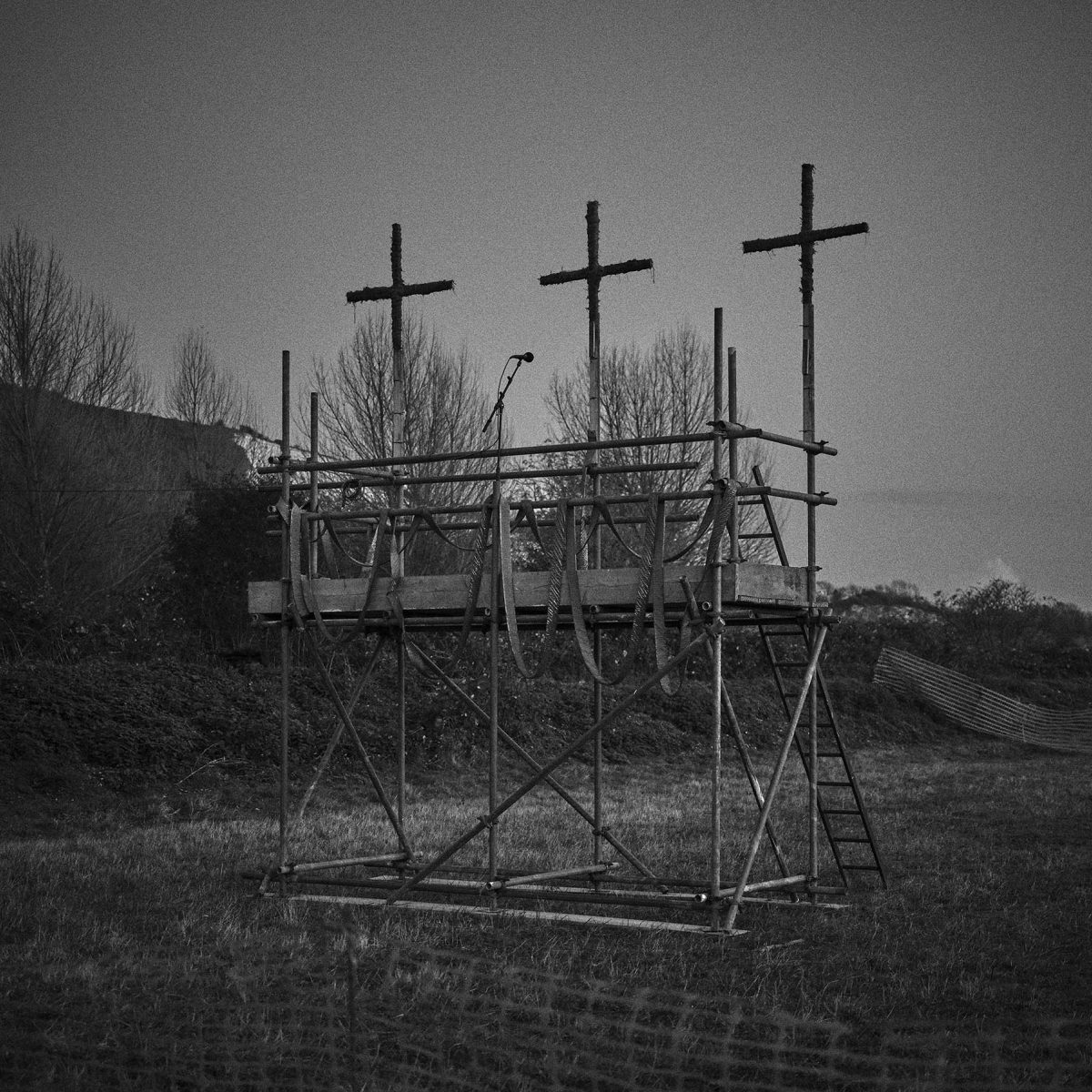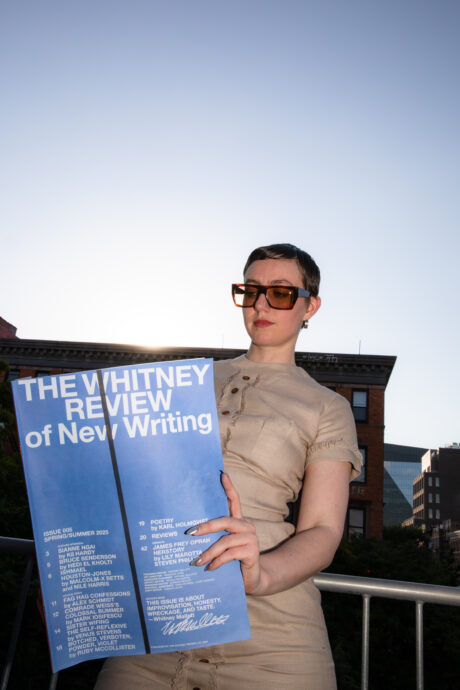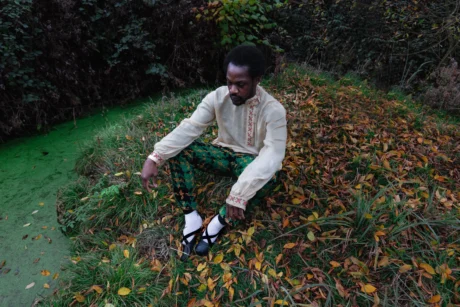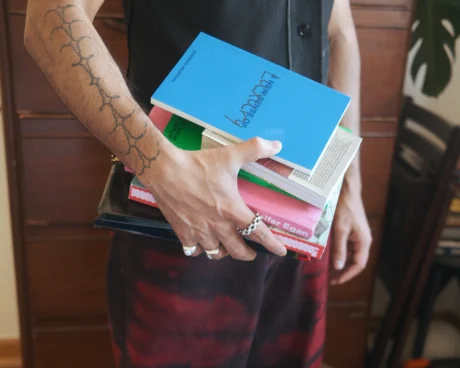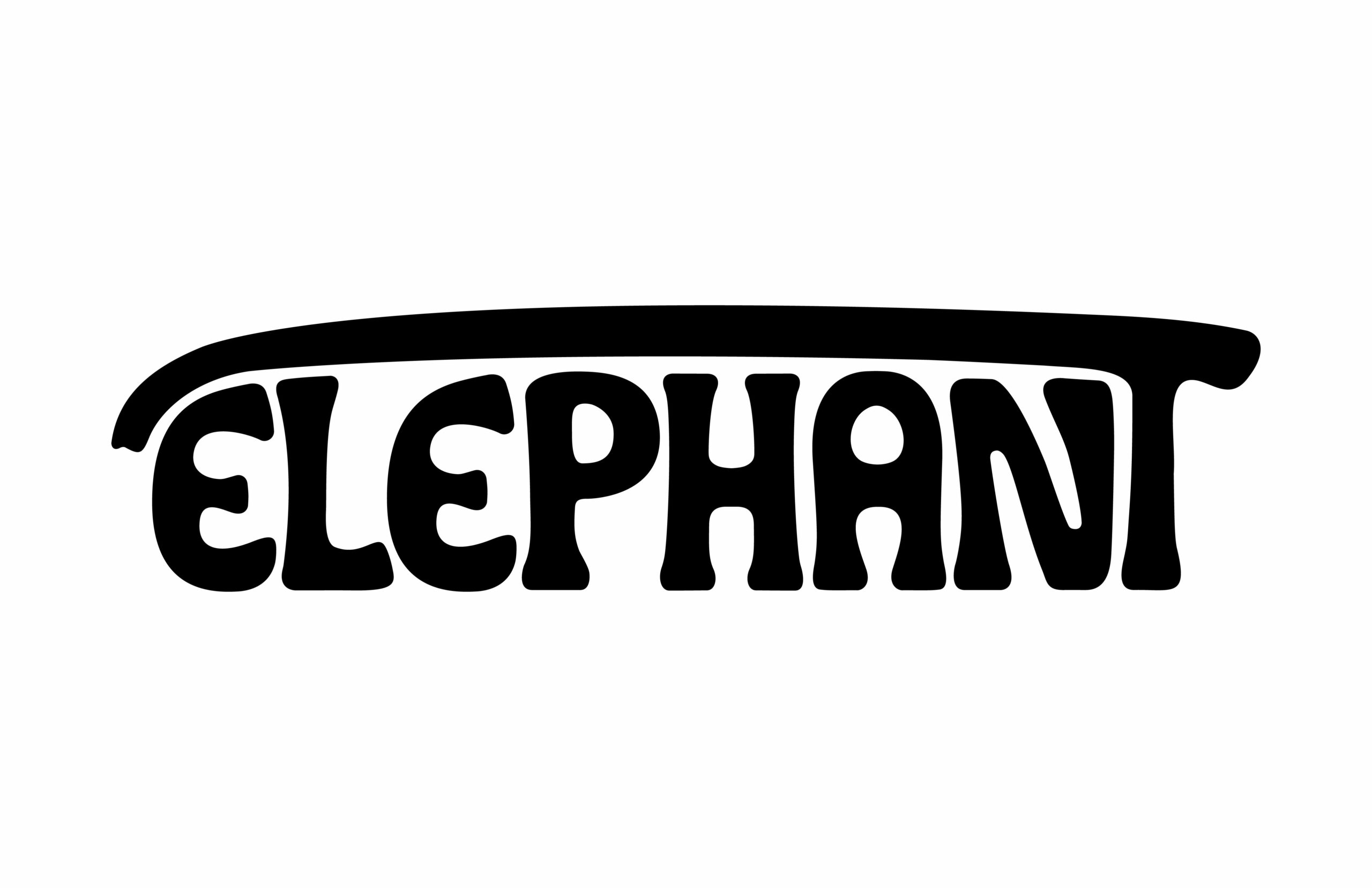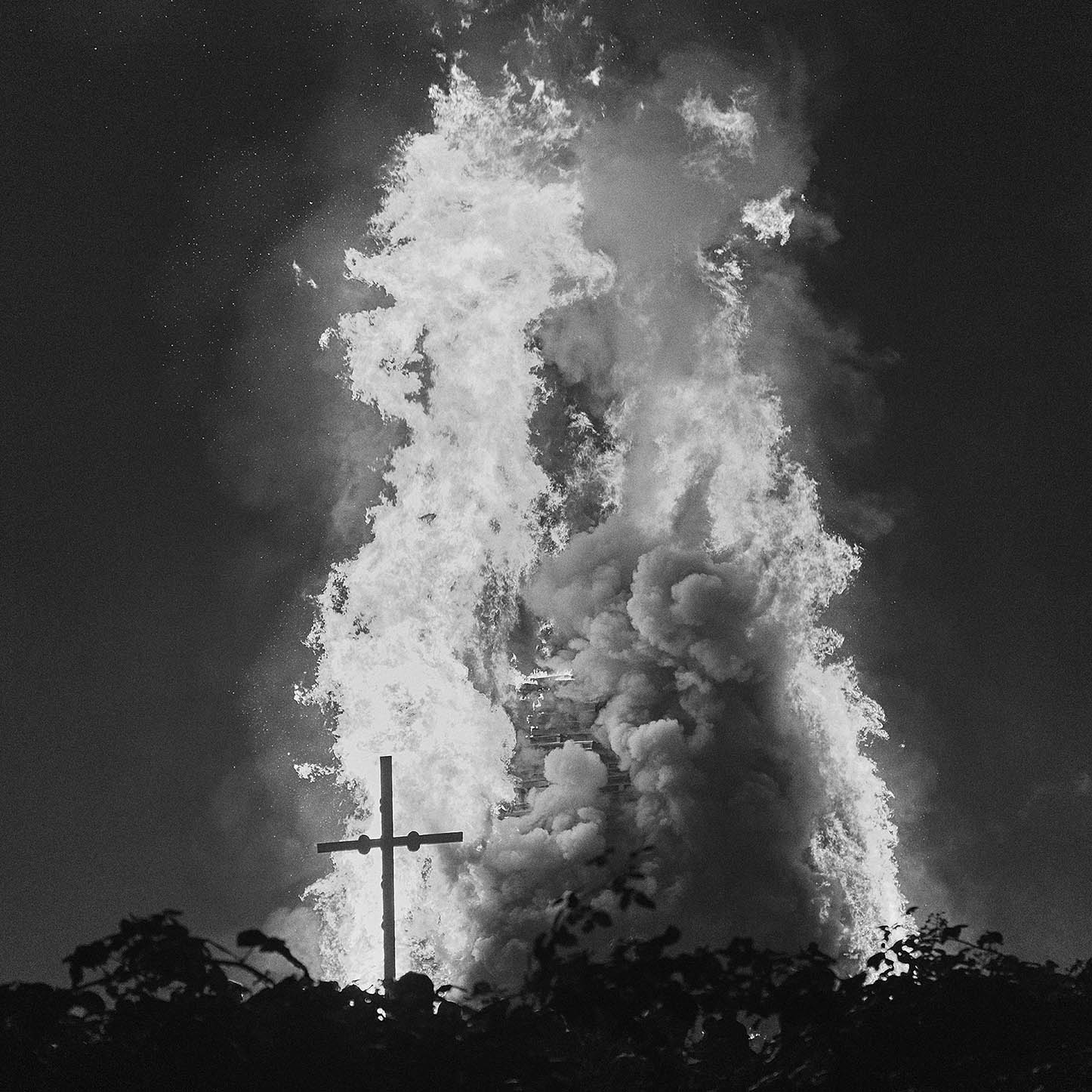
In Apiary, Robin Friend captures the Bonfire Night celebrations in the East Sussex town of Lewes, bringing forth the human, symbolic and rural dimensions of the infamous yearly gathering to celebrate the foiling of the 1605 gunpowder plot.
Friend’s photographs play with both the medieval and modern iconography of the festivities: standalone pictures of the wooden pyre, burning lanterns and wooden crosses evoke Christianity (though gesturing towards a darker pseudo-religiosity), while human studies show young revellers lingering around bus shelters, their white trainers glaring as Friend passes by unnoticed. A parked tractor lies among the shrubs as small meteors fly off the nearby bonfire.
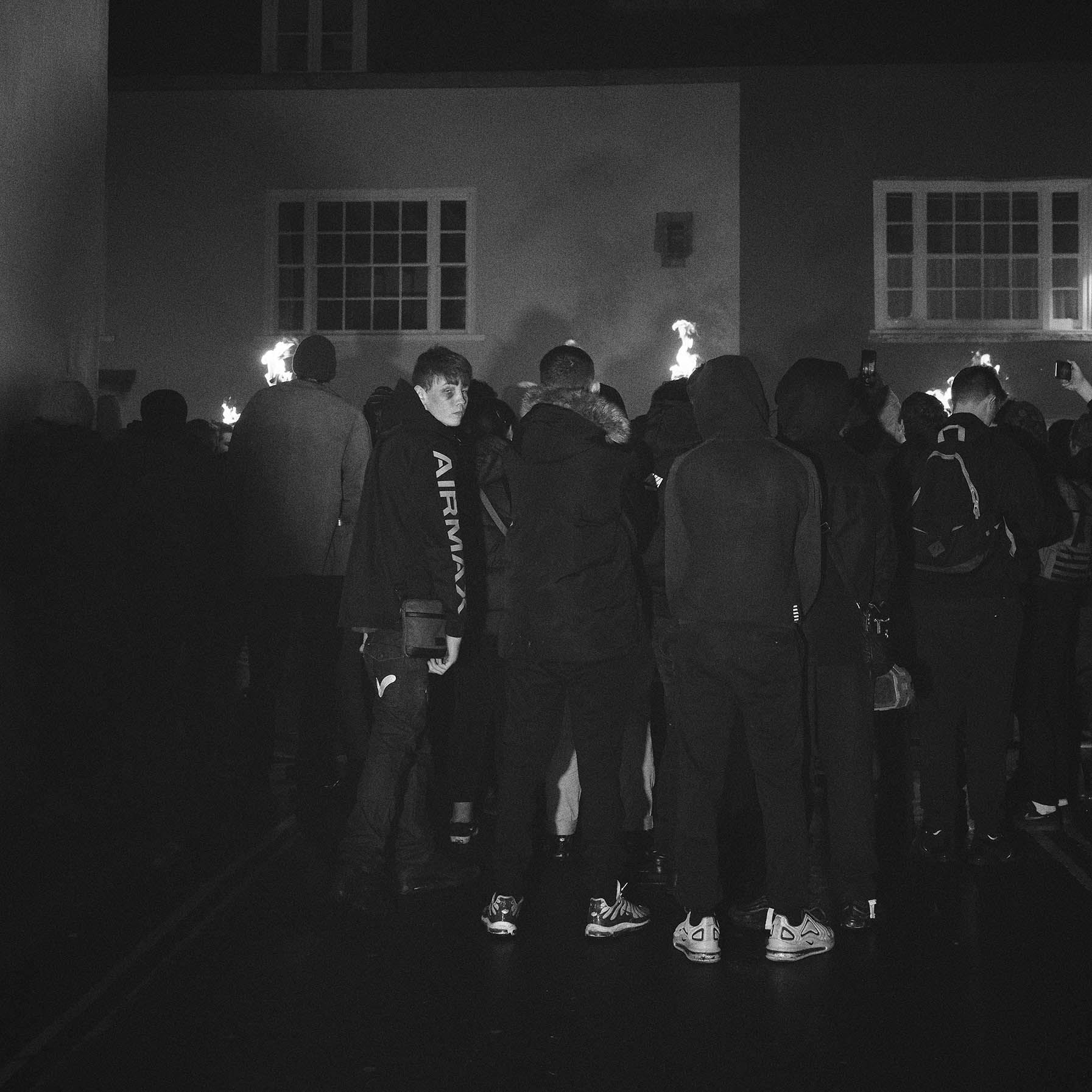
The story begins in the dead of night, opening with a full moon whose half-light lingers through the whole book. Daytime shadows are replaced with eerier illuminations, with Friend’s flash bringing a clarity only possible without the interference of sunlight.
Compared with Friend’s Bastard Countryside, where the presentation of photographs from a 15-year period offered fertile ground for political narrativising, Apiary captures images from just a few nights, looking into more distant history for its parallels. Records of payments to bell ringers made on Bonfire Night in Lewes date from at least 1661. The earliest known gatherings were in 1795; riots followed in 1829 and 1847. After being cancelled due to the pandemic in 2020, effigies of Dominic Cummings and Matt Hancock were thrown onto the fire during this year’s revival, which was attended by an estimated 25,000 people.
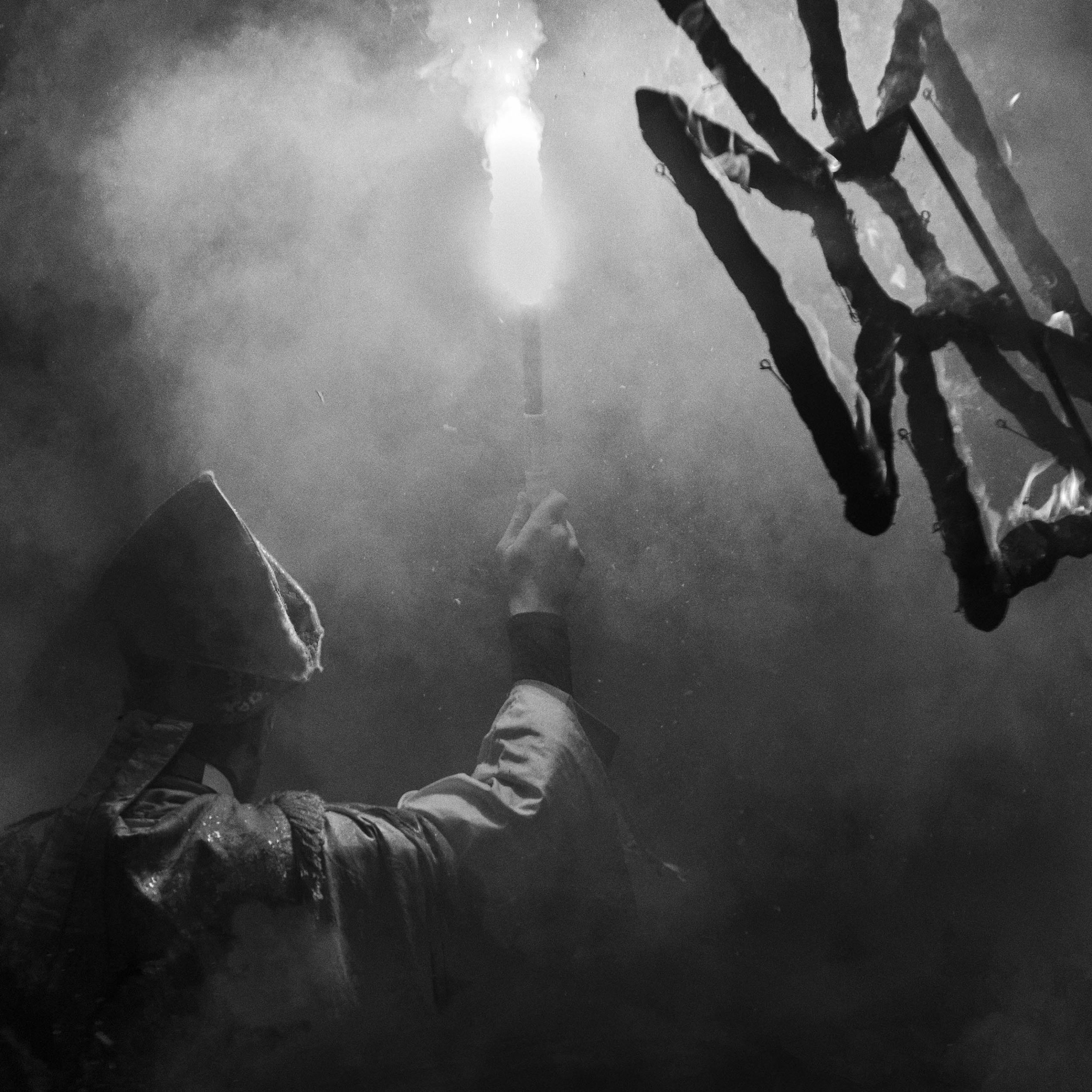
The book concludes with an excerpt from Thomas Hobbes’ Leviathan, in which the English philosopher lays out the two avenues to ‘Soveraigne Power’. The first, a coercive authority, involves man exerting control over his ‘children’ (subjects) by threatening their destruction, and in turn warring with his enemies to force their submission. The other, Hobbes writes, “is when men agree amongst themselves, to submit to some Man, or Assembly of men, voluntarily, on confidence to be protected by him against all others.” The first is Commonwealth by Acquisition; the second, Political Commonwealth.
Friend’s most populous image is taken from behind a large crowd, the backs of hundreds of heads evoking some kind of togetherness. The hazy sky and electric lamp around which they gather hint at their true purpose. Is anarchy in the air? Friend’s eye for destruction bubbling just under the surface suggests it could be. We are trained to be wary of the crowd’s unknowability: they could be united in a shared commonwealth, or zombified in their scheming anonymity.
Ravi Ghosh is Elephant’s editorial assistant
Images © Robin Friend, 2021. Courtesy Loose Joints
